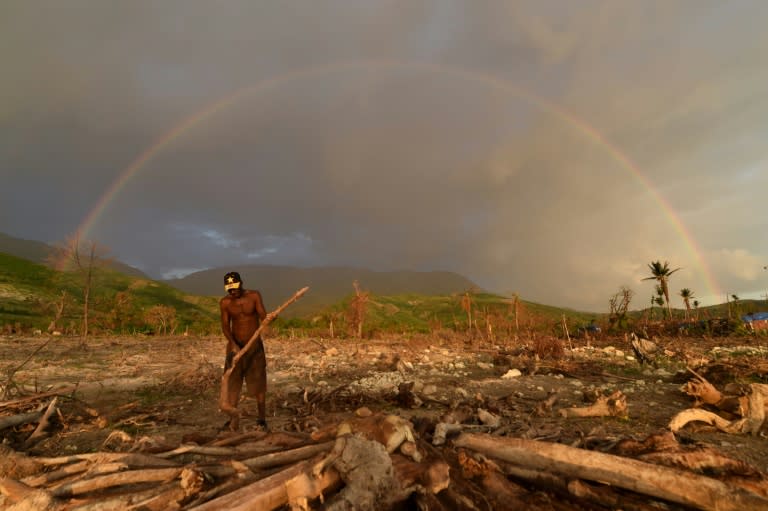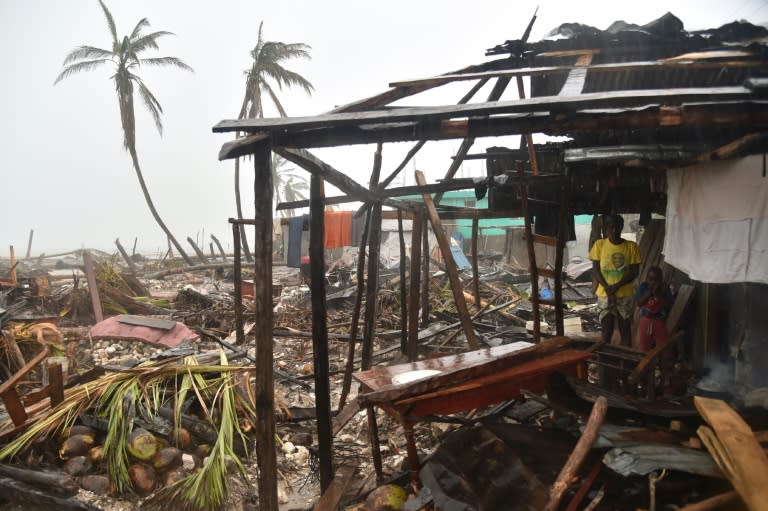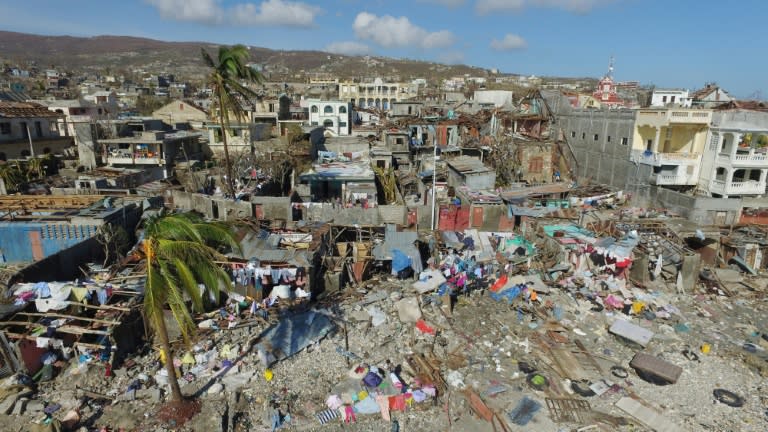A year after Hurricane Matthew, Haiti more vulnerable than ever
Haiti may have been largely spared from this year's worst hurricanes -- Harvey, Irma and Maria -- but it is still picking up the pieces from disastrous Matthew last year. That hurricane, which struck a year ago to the day, killed more than 500 people and caused two billion dollars in damage in the poorest country in the Americas. And the consequences are not over. The category 4 hurricane was the strongest to hit Haiti in a decade. Still, even though so many people died and so much damage was wrought, it did not change the way the country prepares for natural disasters. For instance, like many coastal areas in the south, the town of Roche-a-Bateaux was ravaged by flooding. And since Matthew the mayor has complained nothing has been done to make the town less vulnerable to flood waters. "Studies were carried out to define what work must be done to dredge river beds. But then nothing was ever done," Mayor Frisnel Chery said. "These days all it takes is a bit of rain to flood the national highway that goes through town. If a hurricane like Matthew were to hit tomorrow it would be more serious," said the mayor. The town of 23,000 has no money for heavy machinery like earthmoving equipment and depends on the national government. Small villages always get left out as more attention is paid to bigger towns, Chery said. -Zero urban planning- Without development planning, risks grow but Haitian towns are made more vulnerable mainly by the total lack of planning when it comes to erecting buildings. Along the coastline at Roche-a-Bateaux, many families who lost everything in Matthew have rebuilt fragile homes in the exact same spot -- with materials they found among the debris. "In Haiti, building permits are a joke. And it is that -- urban planning -- which helps you avoid having to count bodies," said Michele Oriol, a sociologist who specializes in land issues. In 2010, more than 200,000 people died in a magnitude 7 earthquake that mainly destroyed metropolitan Port-au-Prince. Since then the city's urban jumble is only worse, with no planning and people once again put in harm's way. "Look at that crazy building," the capital's mayor Youri Chevry said despondently, raising his arm toward mountains overlooking the city. In the past months more and more people have settled on the slopes of the mountains. Informal refugee camps for hurricane victims have grown densely populated even though they have no water, electricity or proper roads. "When it comes to climate change, all of the Caribbean is threatened. But in Hait we are the most at risk because of our behavior," said Chevry. In 2012, in order to halt construction in this area, which is a natural escape route for rainwater, the Environment Ministry said it wanted to tear down more than 3,000 homes that were built illegally. But residents complained and nothing was ever done. - Poor distribution of aid - Humanitarian aid distribution in the first days after a disaster is not Haiti's forte, either. "We take aid where it is easiest to deliver. As it is given to larger towns, people from the mountains come down and stay there, in precarious conditions. Every new neighborhood corresponds to a natural disaster," said Michele Oriol. As more shanty towns pop up every time there is a natural disaster, this means the poorest Haitians are more and more vulnerable. "These are the people who will be the victims of the next storm because they are going to settle wherever there is available space. In other words, next to a river, at the seaside, in dangerous areas. It is a vicous cycle," said Oriol, who is worried about the current hurricane season stretching until the end of November.




